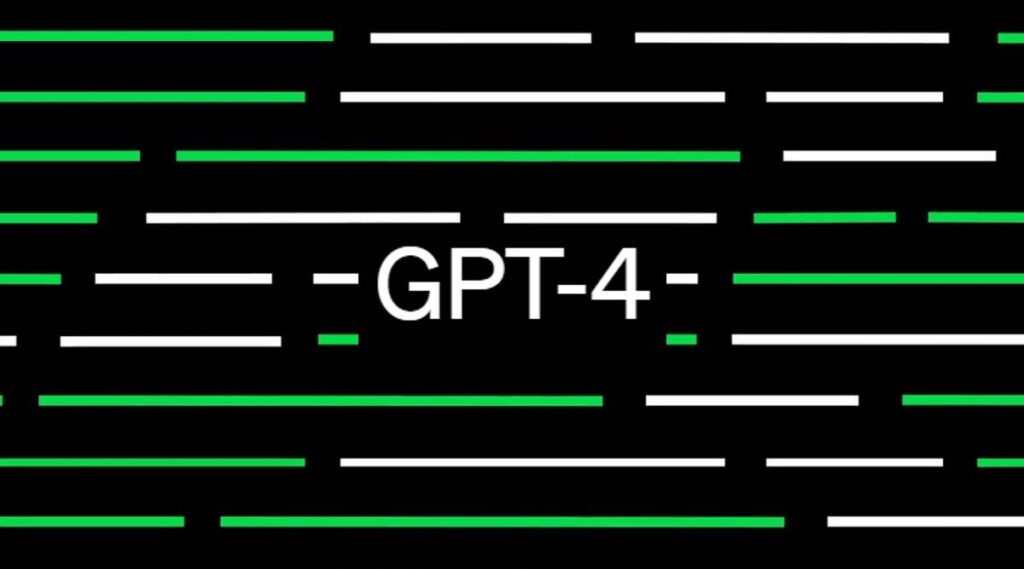OpenAI’s New GPT-4 Model Released: What is GPT-4, Know GPT-4 Features and how to access GPT-4 right now
OpenAI’s New GPT-4 Model :Natural language processing has come a long way in recent years, and OpenAI’s GPT-3 has been at the forefront of this revolution. GPT-3 has been widely adopted by businesses and researchers alike, thanks to its incredible language processing capabilities. However, OpenAI has recently announced the development of its latest model, OpenAI’s New GPT-4 Model, which promises to be even more powerful than its predecessor.
It was actually on March 14, 2023 – almost four months after they released ChatGPT to the public in November 2022. It’s pretty exciting to think about how far language models have come in such a short amount of time!

So, what exactly is GPT-4 Model, and how does it work? In this article, we will explore the features and capabilities of GPT-4 Model and discuss its potential impact on the field of natural language processing.
OpenAI’s New GPT-4 : what can I do with GPT-4?
GPT-4 Model stands for Generative Pre-trained Transformer, which is a fancy way of saying that it’s a language model that can generate human-like text through deep learning. And the exciting news is that GPT-4 is even more advanced than its predecessor, GPT 3.5!
But that’s not all. According to OpenAI’s New GPT-4 is a real overachiever, exhibiting human-level performance on a range of professional and academic benchmarks. It can even pass a simulated bar exam with a score that puts it in the top 10% of test takers! And when it comes to solving tough problems, GPT-4’s broader general knowledge and problem-solving abilities give it a serious advantage.
So what can you do withGPT-4 Model? Well, pretty much anything you can imagine. It can answer tax-related questions, schedule a meeting for three busy people, or even learn your creative writing style. Plus, with the ability to handle over 25,000 words of text, OpenAI’s New GPT-4 Modelopens up a whole new world of possibilities for long-form content creation, document search and analysis, and extended conversations.
All in all, OpenAI’s New GPT-4 is a pretty impressive piece of technology, and we can’t wait to see what kind of amazing things people will be able to do with it.
How is GPT-4 different from GPT-3?
Have you been wondering what sets GPT-4 apart from its predecessor, GPT-3? Well, one of the biggest changes is that GPT-4 is now multimodal, which means it can understand more than just text. Unlike GPT-3 and my own version, ChatGPT’s GPT-3.5, which were limited to textual input and output, OpenAI’s New GPT-4 can handle images as well.
It’s kind of like Google Lens, but on steroids. While Lens can only search for information related to an image, GPT-4 takes things to the next level by actually understanding and analyzing the image. For example, OpenAI’s New GPT-4 showed off an example of OpenAI’s New GPT-4 explaining the joke in an image of an absurdly large iPhone connector. Pretty impressive, right?
Now, it’s worth noting that the image input feature is still in the research phase and isn’t publicly available just yet. But it’s exciting to think about the possibilities this could open up in the future.
GPT-4 Features and Capabilities
GPT-4 is harder to trick: You know how sometimes generative models like ChatGPT and Bing can generate responses that are just plain weird or even misleading? Well, the good news is that GPT-4 is much better at staying on track.
According to OpenAI, they spent a full 6 months training OpenAI’s New GPT-4 using lessons from their “adversarial testing program” as well as ChatGPT. And the results are pretty impressive: GPT-4 is the company’s “best-ever” model when it comes to getting facts right, staying on topic, and not wandering off into dangerous territory. It’s a big step forward for generative models, and it could mean that we’ll be able to rely on them even more in the future.
GPT-4 can process more information at a time: If you thought ChatGPT’s GPT-3.5 was impressive, wait until you hear about OpenAI’s New GPT-4’s processing power. You see, even though Large Language Models (LLMs) like these have been trained on billions of parameters and tons of data, there are still limits to how much information they can handle in a conversation.
But here’s where GPT-4 really shines: it can handle a whopping 32,768 tokens, which is around 64,000 words. Compare that to ChatGPT’s 4,096 tokens or 8,000 words, and you can see just how much of an improvement this is. Thanks to this increase in processing power, GPT-4 can keep up with way lengthier conversations without losing track of things. It can even handle lengthy documents and generate long-form content, which is something that was a lot more limited on GPT-3.5. Overall, it’s pretty darn impressive!
GPT-4 has an improved accuracy: While GPT-4 still has some limitations and isn’t completely foolproof, it’s definitely a step up in terms of accuracy. OpenAI acknowledges that the model still has some issues with reasoning errors and isn’t always 100% reliable. However, compared to previous versions, GPT-4 significantly reduces hallucinations and scores 40% higher on factuality evaluations than GPT-3.5. In other words, GPT-4 is much less likely to produce undesirable outputs like hate speech or misinformation. It’s a lot harder to trick this model into generating inaccurate or harmful content, which is a huge win for anyone using it.
GPT-4 is better at understanding different languages than English: GPT-4 isn’t just good with English – it’s also more multilingual. While most machine learning data is in English and most internet content is also in English, GPT-4 has shown it can accurately answer thousands of multiple-choice questions across 26 different languages, outperforming GPT-3.5 and other language models. English is still its strongest language, with an impressive 85.5% accuracy rate, but even Indian languages like Telugu score a respectable 71.4%. This means that chatbots based on GPT-4 will be able to produce more accurate and clear outputs in a wider range of languages, making them more useful and accessible for people around the world.
Where can I access GPT-4?
Are you itching to try out GPT-4? While it’s not yet available for free, it has already been integrated into popular platforms like Duolingo, Stripe, and Khan Academy. If you don’t mind shelling out $20 per month, you can get immediate access to GPT-4 through a ChatGPT Plus subscription. However, the free tier of ChatGPT is still based on the older GPT-3.5 model.
But here’s a secret – there’s an “unofficial” way to start using GPT-4 right now. Microsoft has confirmed that the new Bing search experience now runs on GPT-4, and you can access it by visiting bing.com/chat. So go ahead and give it a try!
Developers who want to use GPT-4 can gain access to it through its API, which is set to start accepting users later this month. OpenAI has announced a waitlist for API access, so interested developers can sign up and wait for their turn to use GPT-4 in their applications.
What is Bing Chat? It’s a chatbot created by Microsoft, and what’s really cool is that it runs on OpenAI’s most advanced language model, GPT-4!
Since its launch, Bing Chat has become incredibly popular, with over 45 million chats taking place within just one month! Yusuf Mehdi, who is a corporate vice president and consumer chief marketing officer at Microsoft, also revealed that the new Bing now has 100 million daily active users – that’s a lot of people!
One of the reasons why Bing Chat is so popular is that it has the same capabilities as ChatGPT, but with one big advantage: it has full access to the internet. This means that it can find information and give you more accurate and detailed responses than ChatGPT can.
GPT-4 Model Conclusion
In conclusion, GPT-4 promises to be a game-changer in the field of natural language processing. Its advanced architecture and algorithms will allow it to process and generate more complex language than ever before, with potential use cases in healthcare, customer service, and more. However, it is important to consider the potential ethical concerns associated with its capabilities and take steps to ensure that it is developed and used responsibly.
(Disclaimer: GFI and GFI Team is updating knowledgeable content in this blog from official sources and is not aiming to promote any particular source or business through this and also, do not hold any copyrighting rights under our names for the content)

